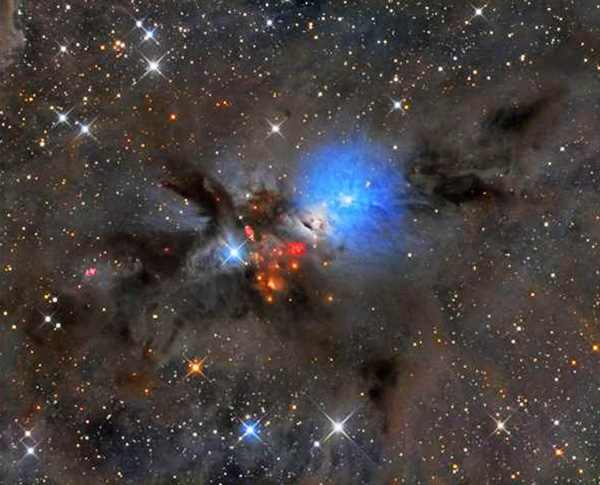|

by Eddie Gonzales Jr.
April 4,
2021
from
MessageToEagle Website

Image
source
Most of the carbon
on Earth was likely delivered from the
interstellar medium, the
material that exists in space between stars in a galaxy, according
to a new study (Earth's
Carbon Deficit caused by early loss through Irreversible Sublimation)
led by Jie (Jackie) Li, a professor in the University
of Michigan, Department of Earth and Environmental Sciences.
Carbon is an
essential element for life, but its behavior during Earth's
accretion is not well understood. However, it is known that a
planet's carbon must exist in the right proportion to support life
as we know it.
Too much carbon and
the Earth's atmosphere would be like
Venus:
trapping heat
from the sun and maintaining a temperature of about 880º
Fahrenheit (440º C)...
Too little carbon and Earth
would resemble
Mars:
an inhospitable
place unable to support water-based life, with temperatures
around -60º F. (-51º C)...
Previously,
researchers believed carbon in the Earth came from molecules that
were initially present in nebular gas, which then accreted into
a rocky planet when the gases were cool enough for the molecules to
precipitate.
In this study, Li
and her team point out that the gas molecules that carry carbon
wouldn't be available to build the Earth because once carbon
vaporizes, it does not condense back into a solid.
"The
condensation model has been widely used for decades.
It assumes that
during the formation of the sun, all of the planet's elements
got vaporized, and as the disk cooled, some of these gases
condensed and supplied chemical ingredients to solid bodies.
But that
doesn't work for carbon," Li sain in a
press release.
Much of carbon was
delivered to the disk in the form of organic molecules.
However,
when carbon is vaporized, it produces much more volatile species
that require very low temperatures to form solids.
More importantly,
carbon does not condense back again into an organic form.
Because of this, Li
and her team inferred most of Earth's carbon
was likely inherited directly from
the interstellar medium, avoiding vaporization entirely.
To better
understand how Earth acquired its carbon, the team compared how
quickly a seismic wave travels through the core to the known sound
velocities of the core.
This told the
researchers that carbon likely makes up less than half a percent of
Earth's mass.
"We asked a
different question:
We asked how much carbon could you stuff in
the Earth's core and still be consistent with all the
constraints," U-M astronomer Edwin Bergin said.
"There's
uncertainty here.
Let's embrace the uncertainty to ask what are
the true upper bounds for how much carbon is very deep in the
Earth, and that will tell us the true landscape we're within."
In a second study,
researchers examined the metallic cores of these bodies, now
preserved as iron meteorites, and found that during this key step of
planetary origin, much of the carbon must be lost as the
planetesimals melt, form cores and lose gas.
"Most models
have the carbon and other life-essential materials such as water
and nitrogen going from the nebula into primitive rocky bodies,
and these are then delivered to growing planets such as Earth or
Mars," said Marc Hirschmann of the University of Minnesota.,
professor of earth and environmental sciences.
"But this skips
a key step, in which the planetesimals lose much of their carbon
before they accrete to the planets."
The two studies
both describe two different aspects of carbon loss - and suggest
that carbon loss appears to be a central aspect in constructing the
Earth as a habitable planet.
"Answering
whether or not Earth-like planets exist elsewhere can only be
achieved by working at the intersection of disciplines like
astronomy and geochemistry," said F.J. Ciesla, a University
of Chicago, professor
of geophysical sciences.
"While
approaches and the specific questions that researchers work to
answer differ across the fields, building a coherent story
requires identifying topics of mutual interest and finding ways
to bridge the intellectual gaps between them.
Doing so is
challenging, but the effort is both stimulating and rewarding."
|


